|
mutLBSgeneDB |
| |
| |
| |
| |
| |
| |
|
| Gene summary for ACVRL1 |
 Gene summary Gene summary |
| Basic gene Info. | Gene symbol | ACVRL1 |
| Gene name | activin A receptor type II-like 1 | |
| Synonyms | ACVRLK1|ALK-1|ALK1|HHT|HHT2|ORW2|SKR3|TSR-I | |
| Cytomap | UCSC genome browser: 12q13.13 | |
| Type of gene | protein-coding | |
| RefGenes | NM_000020.2, NM_001077401.1, | |
| Description | TGF-B superfamily receptor type Iactivin A receptor, type II-like kinase 1serine/threonine-protein kinase receptor R3 | |
| Modification date | 20141219 | |
| dbXrefs | MIM : 601284 | |
| HGNC : HGNC | ||
| Ensembl : ENSG00000139567 | ||
| HPRD : 03181 | ||
| Vega : OTTHUMG00000169507 | ||
| Protein | UniProt: P37023 go to UniProt's Cross Reference DB Table | |
| Expression | CleanEX: HS_ACVRL1 | |
| BioGPS: 94 | ||
| Pathway | NCI Pathway Interaction Database: ACVRL1 | |
| KEGG: ACVRL1 | ||
| REACTOME: ACVRL1 | ||
| Pathway Commons: ACVRL1 | ||
| Context | iHOP: ACVRL1 | |
| ligand binding site mutation search in PubMed: ACVRL1 | ||
| UCL Cancer Institute: ACVRL1 | ||
| Assigned class in mutLBSgeneDB | A: This gene has a literature evidence and it belongs to targetable_mutLBSgenes. | |
| References showing study about ligand binding site mutation for ACVRL1. | 1. "Alaa El Din F, Patri S, Thoreau V, Rodriguez-Ballesteros M, Hamade E, Bailly S, Gilbert-Dussardier B, Abou Merhi R, Kitzis A. Functional and splicing defect analysis of 23 ACVRL1 mutations in a cohort of patients affected by Hereditary Hemorrhagic Telangiectasia. PLoS One. 2015 Jul 15;10(7):e0132111. doi: 10.1371/journal.pone.0132111. eCollection 2015. PubMed PMID: 26176610; PubMedCentral PMCID: PMC4503601." 26176610 | |
 Gene ontology having evidence of Inferred from Direct Assay (IDA) from Entrez Gene ontology having evidence of Inferred from Direct Assay (IDA) from Entrez |
| GO ID | GO Term | PubMed ID | GO:0006468 | protein phosphorylation | 12065756 | GO:0007165 | signal transduction | 15702480 | GO:0007179 | transforming growth factor beta receptor signaling pathway | 15702480 | GO:0010596 | negative regulation of endothelial cell migration | 17068149 | GO:0030308 | negative regulation of cell growth | 17068149 | GO:0030513 | positive regulation of BMP signaling pathway | 17068149 | GO:0032924 | activin receptor signaling pathway | 8242742 | GO:0045893 | positive regulation of transcription, DNA-templated | 12393874 | GO:0045944 | positive regulation of transcription from RNA polymerase II promoter | 19366699 | GO:0071560 | cellular response to transforming growth factor beta stimulus | 19494318 |
| Top |
| Ligand binding site mutations for ACVRL1 |
 Cancer type specific mutLBS sorted by frequency Cancer type specific mutLBS sorted by frequency |
| LBS | AAchange of nsSNV | Cancer type | # samples | T277 | T277M | COAD | 2 | R334 | K332N | LUAD | 1 | D348 | G350S | SKCM | 1 |
| cf) Cancer type abbreviation. BLCA: Bladder urothelial carcinoma, BRCA: Breast invasive carcinoma, CESC: Cervical squamous cell carcinoma and endocervical adenocarcinoma, COAD: Colon adenocarcinoma, GBM: Glioblastoma multiforme, LGG: Brain lower grade glioma, HNSC: Head and neck squamous cell carcinoma, KICH: Kidney chromophobe, KIRC: Kidney renal clear cell carcinoma, KIRP: Kidney renal papillary cell carcinoma, LAML: Acute myeloid leukemia, LUAD: Lung adenocarcinoma, LUSC: Lung squamous cell carcinoma, OV: Ovarian serous cystadenocarcinoma, PAAD: Pancreatic adenocarcinoma, PRAD: Prostate adenocarcinoma, SKCM: Skin cutaneous melanoma, STAD: Stomach adenocarcinoma, THCA: Thyroid carcinoma, UCEC: Uterine corpus endometrial carcinoma. |
 Clinical information for ACVRL1 from My Cancer Genome. Clinical information for ACVRL1 from My Cancer Genome. |
| Activin A receptor type II-like 1 (ACVRL1) is a gene that encodes a protein that functions as a type I cell-surface receptor for the TGF-beta superfamily of ligands. Missense mutations, nonsense mutations, silent mutations, and frameshift deletions are observed in cancers such as intestinal cancer, skin cancer, and stomach cancer. Modified: July 1, 2015 |
| Top |
| Protein structure related information for ACVRL1 |
 Relative protein structure stability change (ΔΔE) using Mupro 1.1 Relative protein structure stability change (ΔΔE) using Mupro 1.1 Mupro score denotes assessment of the effect of mutations on thermodynamic stability. (ΔΔE<0: mutation decreases stability, ΔΔE>0: mutation increases stability) |
 : nsSNV at non-LBS : nsSNV at non-LBS : nsSNV at LBS : nsSNV at LBS |
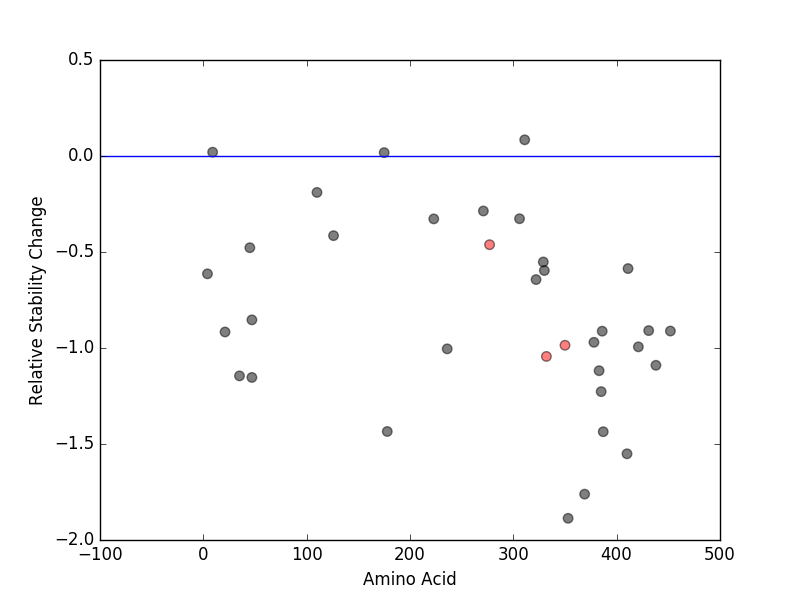 |
 nsSNVs sorted by the relative stability change of protein structure by each mutation nsSNVs sorted by the relative stability change of protein structure by each mutation Blue: mutations of positive stability change. and red : the most recurrent mutation for this gene. |
| LBS | AAchange of nsSNV | Relative stability change | R334 | K332N | -1.0439374 | D348 | G350S | -0.98571451 | T277 | T277M | -0.46198168 |
| (MuPro1.1: Jianlin Cheng et al., Prediction of Protein Stability Changes for Single-Site Mutations Using Support Vector Machines, PROTEINS: Structure, Function, and Bioinformatics. 2006, 62:1125-1132) |
 Structure image for ACVRL1 from PDB Structure image for ACVRL1 from PDB |
| PDB ID | PDB title | PDB structure | 3MYO | Crystal structure of the ACVRL1 (ALK1) kinase domain bound to LDN-193189 | 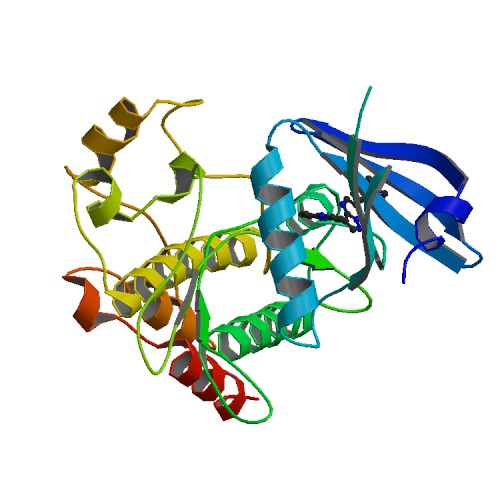 |
| Top |
| Differential gene expression and gene-gene network for ACVRL1 |
 Differential gene expression between mutated and non-mutated LBS samples in all 16 major cancer types Differential gene expression between mutated and non-mutated LBS samples in all 16 major cancer types |
 Differential co-expressed gene network based on protein-protein interaction data (CePIN) Differential co-expressed gene network based on protein-protein interaction data (CePIN) |
| Top |
| Top |
| Phenotype information for ACVRL1 |
 Gene level disease information (DisGeNet) Gene level disease information (DisGeNet) |
| Disease ID | Disease name | # PubMed | Association type |
| umls:C0039445 | Telangiectasia, Hereditary Hemorrhagic | 60 | AlteredExpression, Biomarker, GeneticVariation |
| umls:C1838163 | Osler-rendu-weber syndrome 2 | 10 | Biomarker, GeneticVariation |
 Mutation level pathogenic information (ClinVar annotation) Mutation level pathogenic information (ClinVar annotation) |
| Allele ID | AA change | Clinical significance | Origin | Phenotype IDs |
| Top |
| Pharmacological information for ACVRL1 |
 Gene expression profile of anticancer drug treated cell-lines (CCLE) Gene expression profile of anticancer drug treated cell-lines (CCLE)Heatmap showing the correlation between gene expression and drug response across all the cell-lines. We chose the top 20 among 138 drugs.We used Pearson's correlation coefficient. |
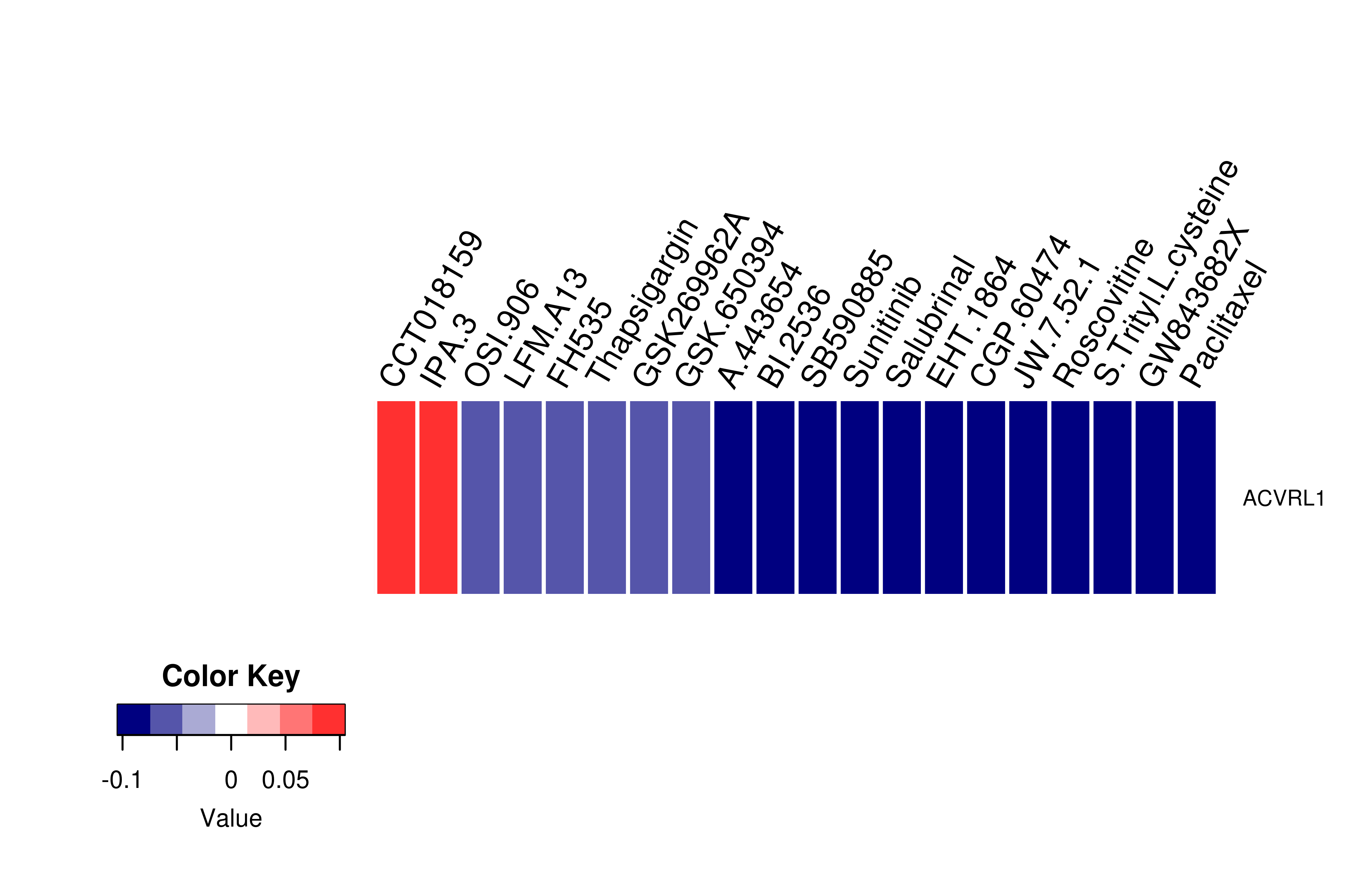 |
 Gene-centered drug-gene interaction network Gene-centered drug-gene interaction network |
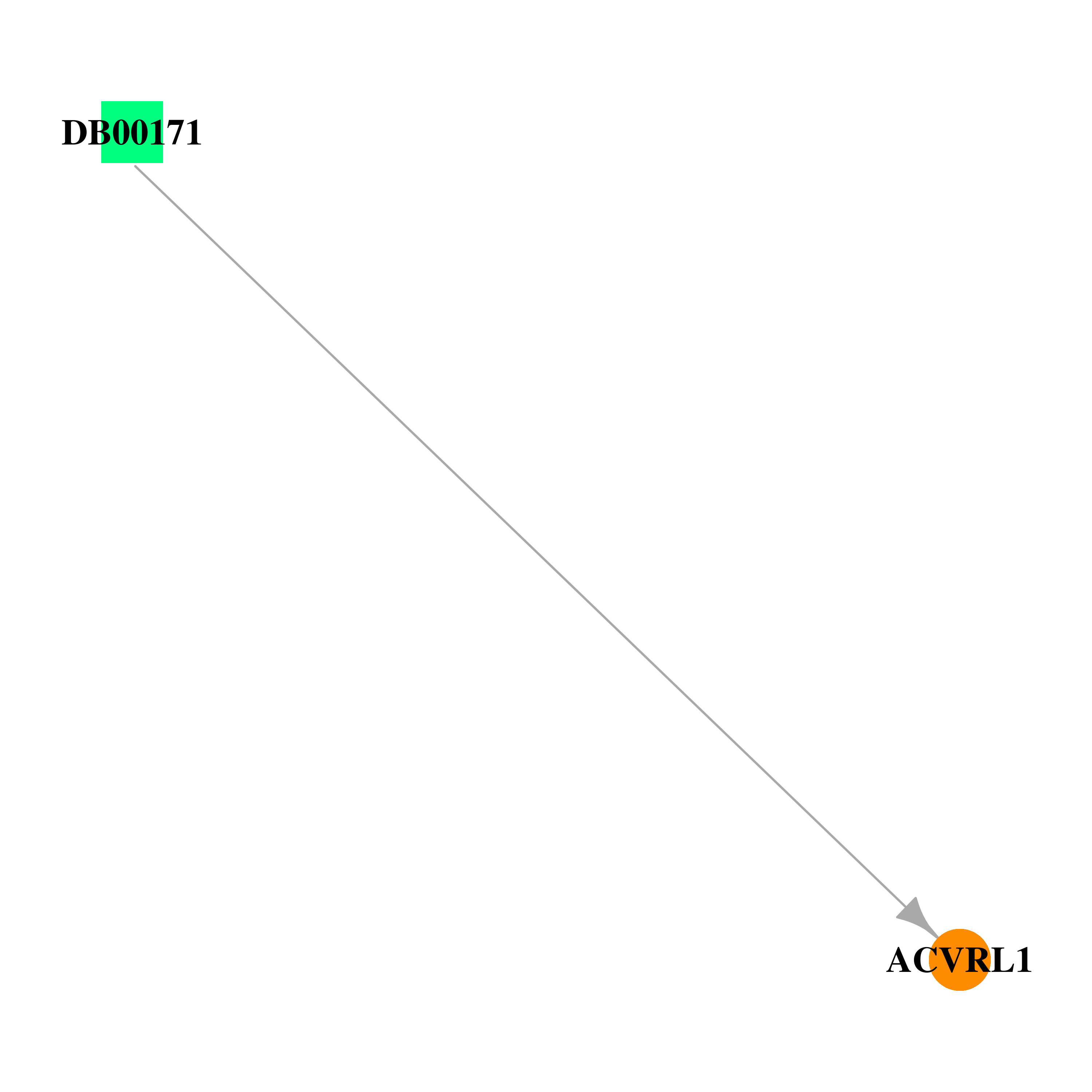 |
 Drug information targeting mutLBSgene (Approved drugs only) Drug information targeting mutLBSgene (Approved drugs only) |
| Drug status | DrugBank ID | Name | Type | Drug structure |
| Approved|nutraceutical | DB00171 | Adenosine triphosphate | Small molecule | 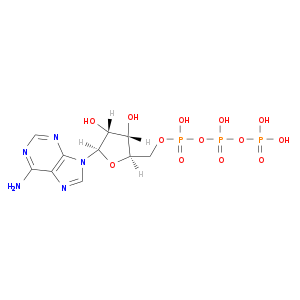 |
 Gene-centered ligand-gene interaction network Gene-centered ligand-gene interaction network |
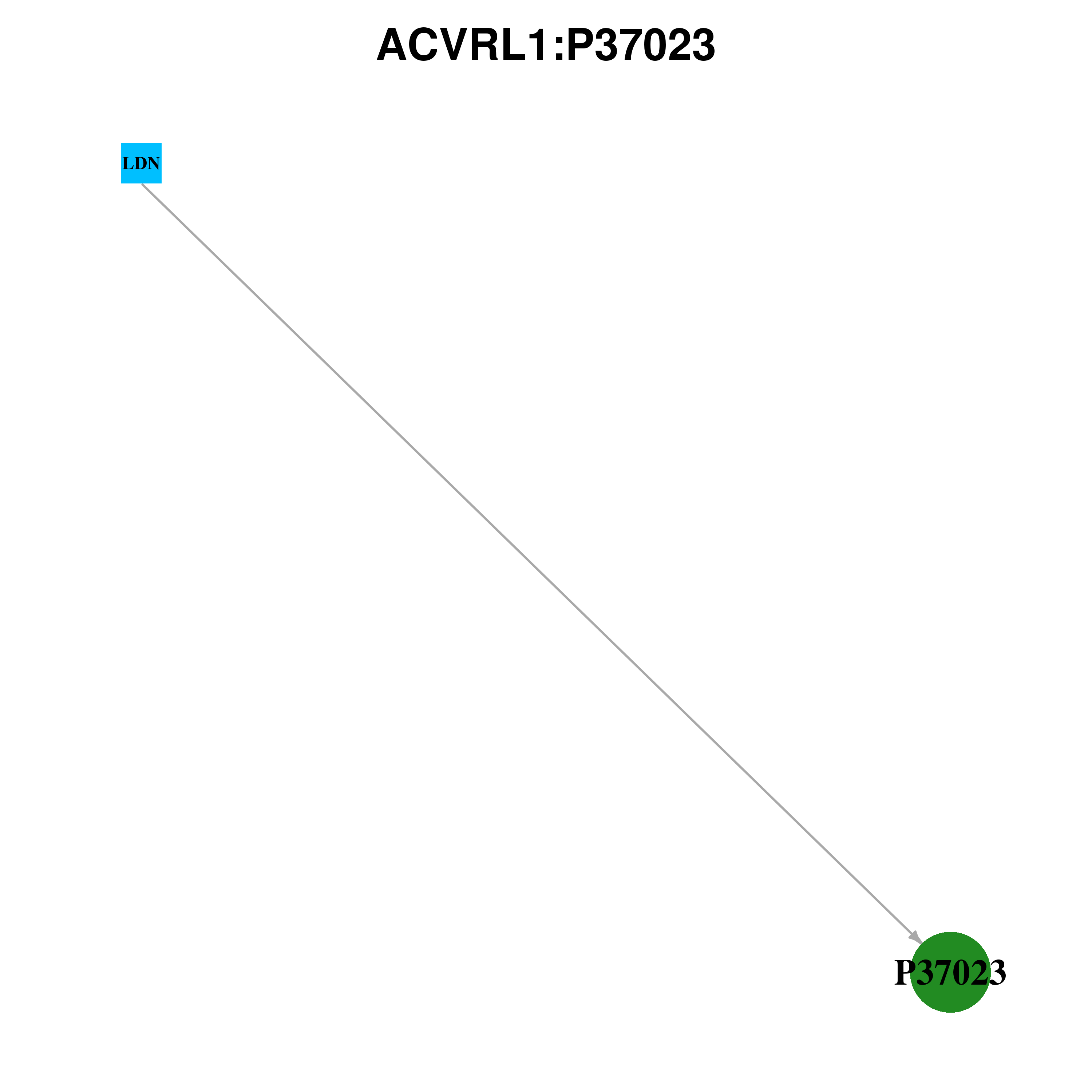 |
 Ligands binding to mutated ligand binding site of ACVRL1 go to BioLip Ligands binding to mutated ligand binding site of ACVRL1 go to BioLip |
| Ligand ID | Ligand short name | Ligand long name | PDB ID | PDB name | mutLBS | LDN | 4-[6-(4-PIPERAZIN-1-YLPHENYL)PYRAZOLO[1,5-A]PYRIMIDIN-3-YL]QUINOLINE | 3my0 | X | R334 D348 | LDN | 4-[6-(4-PIPERAZIN-1-YLPHENYL)PYRAZOLO[1,5-A]PYRIMIDIN-3-YL]QUINOLINE | 3my0 | M | T277 | LDN | 4-[6-(4-PIPERAZIN-1-YLPHENYL)PYRAZOLO[1,5-A]PYRIMIDIN-3-YL]QUINOLINE | 3my0 | U | T277 | LDN | 4-[6-(4-PIPERAZIN-1-YLPHENYL)PYRAZOLO[1,5-A]PYRIMIDIN-3-YL]QUINOLINE | 3my0 | R | T277 D348 | LDN | 4-[6-(4-PIPERAZIN-1-YLPHENYL)PYRAZOLO[1,5-A]PYRIMIDIN-3-YL]QUINOLINE | 3my0 | A | T277 R334 | LDN | 4-[6-(4-PIPERAZIN-1-YLPHENYL)PYRAZOLO[1,5-A]PYRIMIDIN-3-YL]QUINOLINE | 3my0 | C | T277 R334 | LDN | 4-[6-(4-PIPERAZIN-1-YLPHENYL)PYRAZOLO[1,5-A]PYRIMIDIN-3-YL]QUINOLINE | 3my0 | D | T277 R334 | LDN | 4-[6-(4-PIPERAZIN-1-YLPHENYL)PYRAZOLO[1,5-A]PYRIMIDIN-3-YL]QUINOLINE | 3my0 | E | T277 R334 | LDN | 4-[6-(4-PIPERAZIN-1-YLPHENYL)PYRAZOLO[1,5-A]PYRIMIDIN-3-YL]QUINOLINE | 3my0 | G | T277 R334 | LDN | 4-[6-(4-PIPERAZIN-1-YLPHENYL)PYRAZOLO[1,5-A]PYRIMIDIN-3-YL]QUINOLINE | 3my0 | H | T277 R334 | LDN | 4-[6-(4-PIPERAZIN-1-YLPHENYL)PYRAZOLO[1,5-A]PYRIMIDIN-3-YL]QUINOLINE | 3my0 | J | T277 R334 | LDN | 4-[6-(4-PIPERAZIN-1-YLPHENYL)PYRAZOLO[1,5-A]PYRIMIDIN-3-YL]QUINOLINE | 3my0 | L | T277 R334 | LDN | 4-[6-(4-PIPERAZIN-1-YLPHENYL)PYRAZOLO[1,5-A]PYRIMIDIN-3-YL]QUINOLINE | 3my0 | N | T277 R334 | LDN | 4-[6-(4-PIPERAZIN-1-YLPHENYL)PYRAZOLO[1,5-A]PYRIMIDIN-3-YL]QUINOLINE | 3my0 | Q | T277 R334 | LDN | 4-[6-(4-PIPERAZIN-1-YLPHENYL)PYRAZOLO[1,5-A]PYRIMIDIN-3-YL]QUINOLINE | 3my0 | T | T277 R334 | LDN | 4-[6-(4-PIPERAZIN-1-YLPHENYL)PYRAZOLO[1,5-A]PYRIMIDIN-3-YL]QUINOLINE | 3my0 | V | T277 R334 | LDN | 4-[6-(4-PIPERAZIN-1-YLPHENYL)PYRAZOLO[1,5-A]PYRIMIDIN-3-YL]QUINOLINE | 3my0 | B | T277 R334 D348 | LDN | 4-[6-(4-PIPERAZIN-1-YLPHENYL)PYRAZOLO[1,5-A]PYRIMIDIN-3-YL]QUINOLINE | 3my0 | F | T277 R334 D348 | LDN | 4-[6-(4-PIPERAZIN-1-YLPHENYL)PYRAZOLO[1,5-A]PYRIMIDIN-3-YL]QUINOLINE | 3my0 | I | T277 R334 D348 | LDN | 4-[6-(4-PIPERAZIN-1-YLPHENYL)PYRAZOLO[1,5-A]PYRIMIDIN-3-YL]QUINOLINE | 3my0 | K | T277 R334 D348 | LDN | 4-[6-(4-PIPERAZIN-1-YLPHENYL)PYRAZOLO[1,5-A]PYRIMIDIN-3-YL]QUINOLINE | 3my0 | O | T277 R334 D348 | LDN | 4-[6-(4-PIPERAZIN-1-YLPHENYL)PYRAZOLO[1,5-A]PYRIMIDIN-3-YL]QUINOLINE | 3my0 | P | T277 R334 D348 | LDN | 4-[6-(4-PIPERAZIN-1-YLPHENYL)PYRAZOLO[1,5-A]PYRIMIDIN-3-YL]QUINOLINE | 3my0 | S | T277 R334 D348 | LDN | 4-[6-(4-PIPERAZIN-1-YLPHENYL)PYRAZOLO[1,5-A]PYRIMIDIN-3-YL]QUINOLINE | 3my0 | W | T277 R334 D348 |
| Top |
| Conservation information for LBS of ACVRL1 |
 Multiple alignments for P37023 in multiple species Multiple alignments for P37023 in multiple species |
| LBS | AA sequence | # species | Species |
 |
Copyright © 2016-Present - The University of Texas Health Science Center at Houston |
